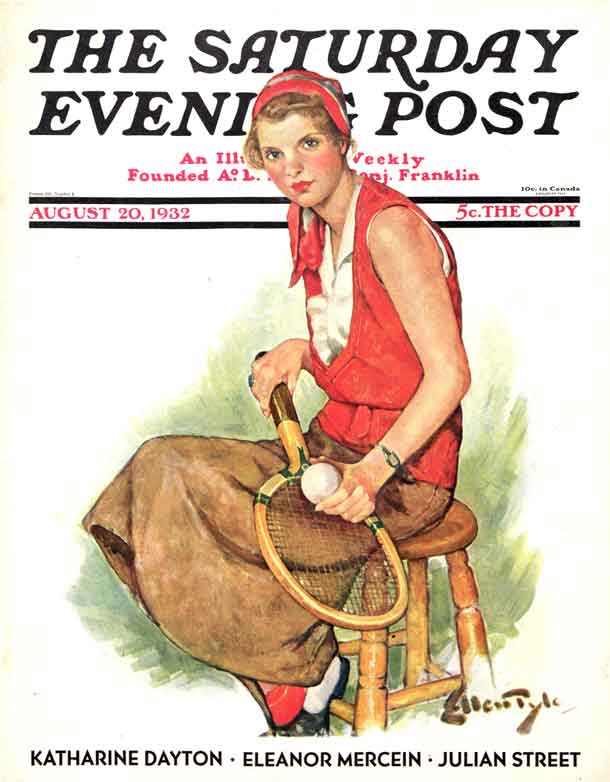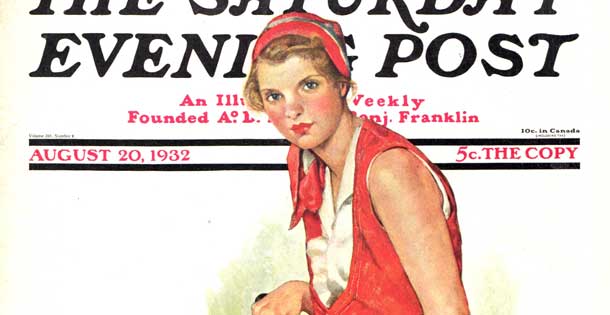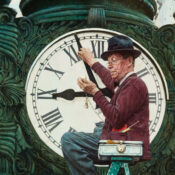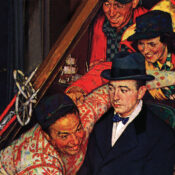
August 22, 1932.
© SEPS 2014
Ellen Bernard Thompson Pyle’s early illustrations for The Saturday Evening Post idealized the 1920s era of glamorous parties and celebration in much the same way Norman Rockwell would later celebrate an idealized rural America of the 1940s and 1950s.
But her notorious depictions of confident flappers in short dresses and even shorter haircuts changed when The Great Depression hit America in October of 1929. Pyle’s color palette and composition took on a darker tone that reflected the nation’s mood.
Pyle’s illustrations from the 1920s and 1930s show women competing in activities like archery, swimming, tennis, gardening, and hockey. The paintings are joyous and playful in the 1920s but become reserved in the 1930s.
Pyle’s August 20, 1932 cover, “The American Girl,” is a perfect example of the change in tone. Where Pyle once showed women smiling in brightly colored outfits, fashionable haircuts, and make-up, this Depression-era cover shows a female tennis player in a muted, brown canvas skirt and a loosely-hanging red top, her hair pulled back by a handkerchief. The glow of her cheeks results from the effort of her workout; it is not the rosy blush of joviality.
Not only has the color and hubris drained from the painting, but Pyle also foregoes her 20s era props of luxurious cars and carriages. This woman just sits on a simple wooden stool. Unlike her carefree flapper predecessor, the American girl of the 1930s is now a resilient heroine who adapts to tougher circumstances. She does without.
The darker color palette of browns and deep reds, combined with the wood of the racket and stool, project an air of simplicity as opposed to the gaudy glam of the decade prior. Rather than show an idealized world of parties that the majority of Americans would never know, Pyle turned to a sense of realism that would better connect with the struggles many Post readers were facing during the Great Depression.
 To learn more about Ellen Pyle and to see other inside illustrations and covers from this artist, click here!.
To learn more about Ellen Pyle and to see other inside illustrations and covers from this artist, click here!.Become a Saturday Evening Post member and enjoy unlimited access. Subscribe now




Comments
I really enjoyed reading your insights into this cover that make me appreciate it that much more than I would have otherwise. I want to study her covers in more depth because of this feature, and do a comparison of Ms. Pyle’s covers of the ’20s with the ’30s myself.
The ’20s was one decade that came to a screeching halt only a couple of months before the calendar said they were over. I don’t know if that ever happened before, but it doesn’t seem to have since. I do know the ’30s never had a chance. Personally I find them equally tragic and fascinating, and hope you’ll do more features on ’30s covers and artists. In doing so hopefully there will be a better understanding of the last century’s arguably most haunting decade.